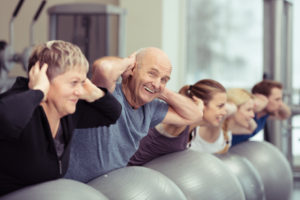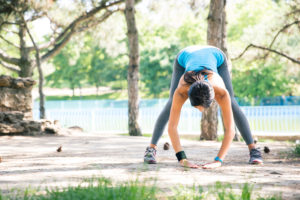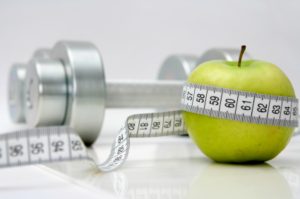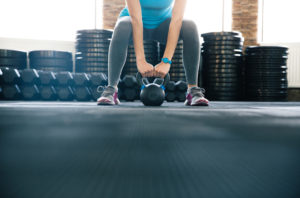
 Physical activity will help you look and feel better. Your skin, hair, posture and muscle tone all will improve. You’ll be stronger and you’ll have more energy. Activity also helps you avoid depression, stress and boredom. You’ll be more alert mentally. Thinking more clearly can even help your performance status at work and school. And, being active is fun!
Physical activity will help you look and feel better. Your skin, hair, posture and muscle tone all will improve. You’ll be stronger and you’ll have more energy. Activity also helps you avoid depression, stress and boredom. You’ll be more alert mentally. Thinking more clearly can even help your performance status at work and school. And, being active is fun!
Benefits of Exercise
- Reverses the detrimental effects of stress
- Reduces depression and anxiety by improving neural circuitry
- Improves learning
- Builds self esteem and improves body image
- Increases neurotransmitters and release endorphins that causes euphoria
- Prevents cognitive decline and memory loss
- Improves sleep
 Just 30 Minutes a Day
Just 30 Minutes a Day
Experts say just 30 minutes of activity on most days will help you stay healthier. Adding exercise into your life may be easier than you think. You can break up the 30 minutes into shorter chunks. Exercise should be done for at least 15 minutes at a time with an accelerated heart rate. Work out hard enough that you lightly sweat and your heart beats faster, but not so hard that you can’t talk while exercising.
The main components to a well-balanced exercise routine are:
Cardiovascular Exercise
Cardiovascular exercises include endurance exercises that strengthen the circulatory system, comprised of the heart and blood vessels. Any activity that increases your heart rate to 50-75% of your maximum heart rate is considered cardiovascular exercise. Maximum heart rate is calculated as 220 minus your age.
Benefits of cardiovascular exercise:
- Helps you lose weight by burning more calories
- Improves circulation of nutrients and oxygen to body tissues by increasing lung capacity, cardiac output, and blood flow
- Improves efficiency of the circulatory system which translates into less work for the heart, which can then operate at lower than maximum capacity,
causing less wear and improving cardiovascular endurance. - Decreases aging of the brain by increasing brain volume
- Releases endorphins, which are natural antidepressants and mood enhancers
- Improves sleep, making you sleep longer and fall asleep faster
- Increases bone density and prevents osteoporosis
Strength Training
Strength training is exercise that builds physical strength. Resistance is used to induce muscular contraction in order to build the strength, endurance, and size of muscles. Strength training can include exercises that use one’s own body weight (such as pushups, pull-ups, crunches, and and squats), resistance tubing (lightweight tubing that provides resistance when stretched), free weights, and weight resistance machines.
Benefits of strength training:
- Since muscle mass naturally diminishes with age, strength building preserves and enhances muscle mass and prevents increase of the percentage of body fat
- Increase bone density and maintain joint flexibility
- Gain muscle to improve calorie expenditure and control weight
- Boost stamina and combat fatigue
Basic Principles:
- Learn proper technique
- Do a single set of repetitions
- Use the proper weight
- Start slowly
- Rest one full day between exercising a specific muscle group
Core Exercise
 Core exercises are designed to train the muscles in the pelvis, lower back, hips, and abdomen to work harmoniously to improve balance and stability, as well as strengthen and tone. When contracting, the core muscles of the torso stabilize the spine, pelvis and shoulder girdle to create a solid base of support in order to generate powerful movements of the extremities. These muscles also keep us upright, help control movement, shift body weight, and transfer energy. By creating a strong core, the stresses of weight bearing are more evenly distributed, which protects the back.
Core exercises are designed to train the muscles in the pelvis, lower back, hips, and abdomen to work harmoniously to improve balance and stability, as well as strengthen and tone. When contracting, the core muscles of the torso stabilize the spine, pelvis and shoulder girdle to create a solid base of support in order to generate powerful movements of the extremities. These muscles also keep us upright, help control movement, shift body weight, and transfer energy. By creating a strong core, the stresses of weight bearing are more evenly distributed, which protects the back.
Core muscles exercises:
- Improve posture
- Minimize lower back pain and other muscles injuries
- Make your fitness program well-rounded in order to reach fitness goals
Flexibility Training

Exercises that help maintain the body’s flexibility, meaning that muscles and joints stretch and bend easily. This can decrease the risk of muscles sprains and strains. Flexibility training is comprised of stretching exercises that increase range of motion of the joints, which then improves mobility and maintains the natural alignment of the body, minimizing injury.
American College of Sports Medicine (ACSM) Guidelines for flexibility training:
Activities: Perform a general stretching routine following exercises that have warmed-up the body, targeting the major muscle and/or joint/tendon groups using static (non-bouncing) techniques
Frequency: At least 3 days per week
Intensity: Slowly stretching to a position of mild discomfort
Duration: Hold stretch for at least 10 seconds, working up to 30 seconds
Repetitions: Perform each stretch 3-5 times
 Just 30 Minutes a Day
Just 30 Minutes a Day
